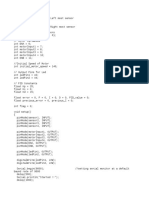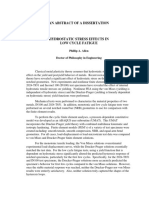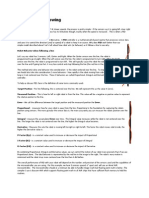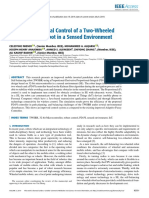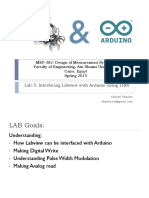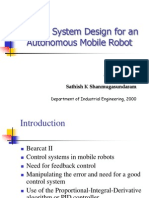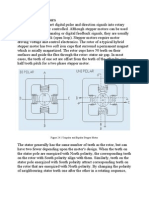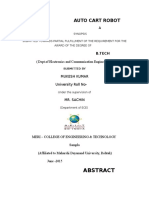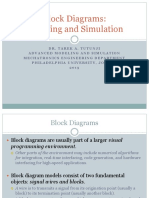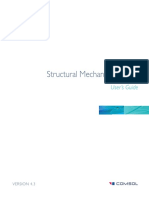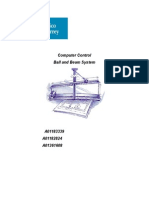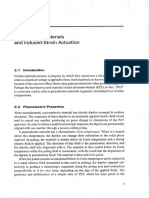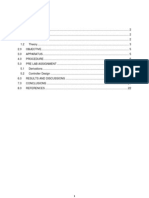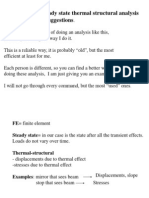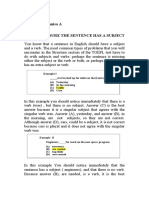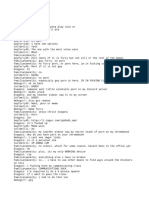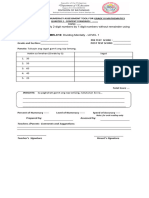#include <L298N.
h>
#include <QTRSensors.h>
#include "BluetoothSerial.h"
#if !defined(CONFIG_BT_ENABLED) || !defined(CONFIG_BLUEDROID_ENABLED)
#error Bluetooth is not enabled! Please run `make menuconfig` to and enable it
#endif
#define AIN1 21 //Assign the motor pins
#define BIN1 25
#define AIN2 22
#define BIN2 33
#define PWMA 23
#define PWMB 32
#define STBY 19
const int offsetA = 1;
const int offsetB = 1;
// Initializing motors. The library will allow you to initialize as many
// motors as you have memory for. If you are using functions like forward
// that take 2 motors as arguements you can either write new functions or
// call the function more than once.
L298N motor1(PWMA, AIN1, AIN2);
L298N motor2(PWMB, BIN1, BIN2);
QTRSensors qtr;
BluetoothSerial SerialBT;
�const uint8_t SensorCount = 5;
uint16_t sensorValues[SensorCount];
int threshold[SensorCount];
float Kp = 0;
float Ki = 0;
float Kd = 0;
uint8_t multiP = 1;
uint8_t multiI = 1;
uint8_t multiD = 1;
uint8_t Kpfinal;
uint8_t Kifinal;
uint8_t Kdfinal;
float Pvalue;
float Ivalue;
float Dvalue;
boolean onoff = false;
int val, cnt = 0, v[3];
uint16_t position;
int P, D, I, previousError, PIDvalue, error;
int lsp, rsp;
int lfspeed = 230;
void setup()
// configure the sensors
qtr.setTypeAnalog();
� qtr.setSensorPins((const uint8_t[]){26, 27, 14, 12, 13}, SensorCount);
delay(500);
pinMode(LED_BUILTIN, OUTPUT);
digitalWrite(LED_BUILTIN, HIGH); // turn on Arduino's LED to indicate we are in calibration mode
Serial.begin(115200);
SerialBT.begin();
Serial.println("Bluetooth Started! Ready to pair...");
// analogRead() takes about 0.1 ms on an AVR.
// 0.1 ms per sensor * 4 samples per sensor read (default) * 6 sensors
// * 10 reads per calibrate() call = ~24 ms per calibrate() call.
// Call calibrate() 400 times to make calibration take about 10 seconds.
for (uint16_t i = 0; i < 400; i++)
qtr.calibrate();
digitalWrite(LED_BUILTIN, LOW); // turn off Arduino's LED to indicate we are through with
calibration
// print the calibration minimum values measured when emitters were on
for (uint8_t i = 0; i < SensorCount; i++)
threshold[i] = (qtr.calibrationOn.minimum[i] + qtr.calibrationOn.maximum[i])/2;
Serial.print(threshold[i]);
Serial.print(" ");
Serial.println();
delay(1000);
�}
void loop()
if (SerialBT.available()){
while(SerialBT.available() == 0);
valuesread();
processing();
if (onoff == true){
robot_control();
else if(onoff == false){
motor1.stop();
motor2.stop();
void robot_control(){
// read calibrated sensor values and obtain a measure of the line position
// from 0 to 4000 (for a white line, use readLineWhite() instead)
position = qtr.readLineBlack(sensorValues);
error = 2000 - position;
while(sensorValues[0]>=980 && sensorValues[1]>=980 && sensorValues[2]>=980 &&
sensorValues[3]>=980 && sensorValues[4]>=980){ // A case when the line follower leaves the line
if(previousError>0){ //Turn left if the line was to the left before
motor_drive(-230,230);
else{
motor_drive(230,-230); // Else turn right
position = qtr.readLineBlack(sensorValues);
� }
PID_Linefollow(error);
//PID_Linefollow(error);
void PID_Linefollow(int error){
P = error;
I = I + error;
D = error - previousError;
Pvalue = (Kp/pow(10,multiP))*P;
Ivalue = (Ki/pow(10,multiI))*I;
Dvalue = (Kd/pow(10,multiD))*D;
float PIDvalue = Pvalue + Ivalue + Dvalue;
previousError = error;
lsp = lfspeed - PIDvalue;
rsp = lfspeed + PIDvalue;
if (lsp > 255) {
lsp = 255;
if (lsp < -255) {
lsp = -255;
if (rsp > 255) {
rsp = 255;
if (rsp < -255) {
rsp = -255;
� }
motor_drive(lsp,rsp);
//This void delimits each instruction.
//The Arduino knows that for each instruction it will receive 2 bytes.
void valuesread() {
val = SerialBT.read();
cnt++;
v[cnt] = val;
if (cnt == 2)
cnt = 0;
//In this void the the 2 read values are assigned.
void processing() {
int a = v[1];
if (a == 1) {
Kp = v[2];
if (a == 2) {
multiP = v[2];
if (a == 3) {
Ki = v[2];
if (a == 4) {
multiI = v[2];
if (a == 5) {
Kd = v[2];
}
� if (a == 6) {
multiD = v[2];
if (a == 7) {
onoff = v[2];
void motor_drive(int left, int right){
if(right>0)
motor2.setSpeed(right);
motor2.forward();
else
motor2.setSpeed(right);
motor2.backward();
if(left>0)
motor1.setSpeed(left);
motor1.forward();
else
motor1.setSpeed(left);
motor1.backward();
}
�}
